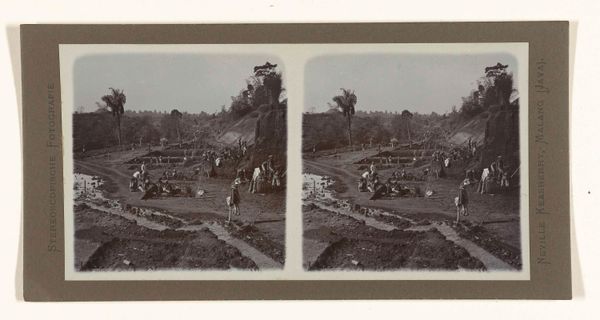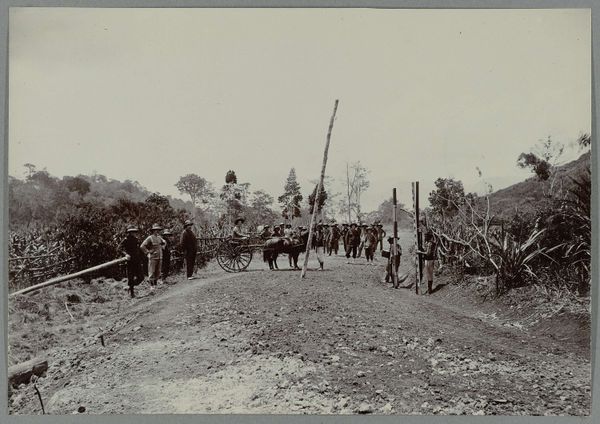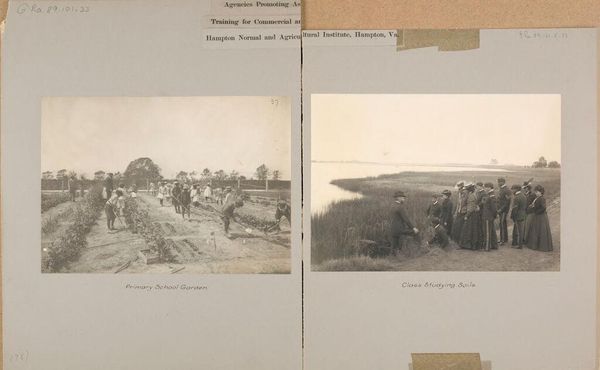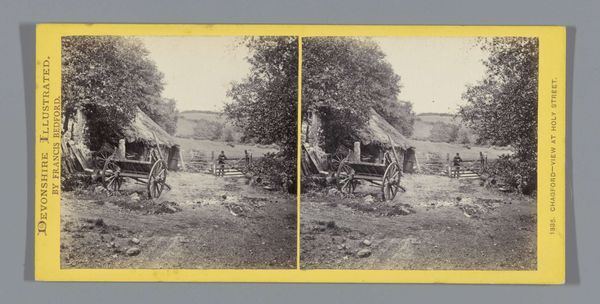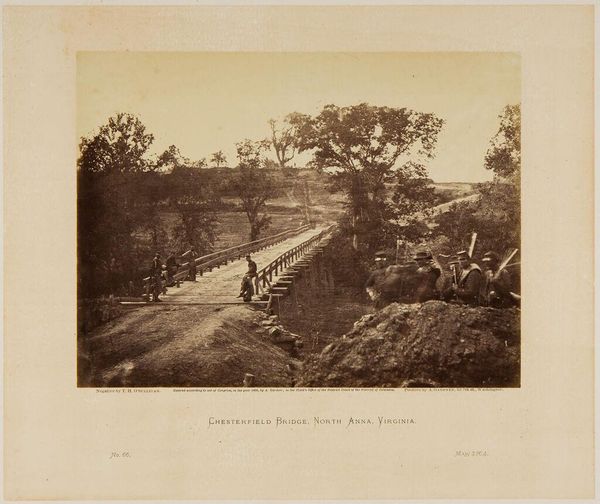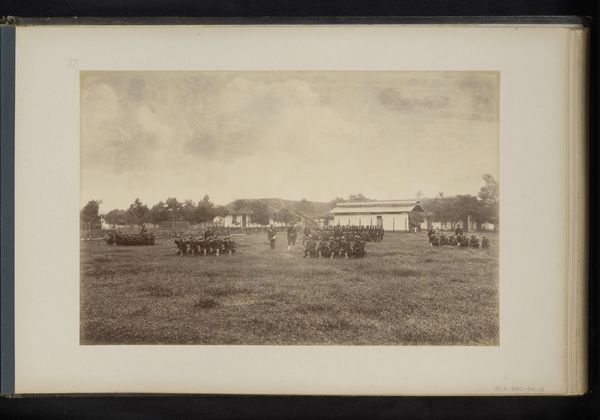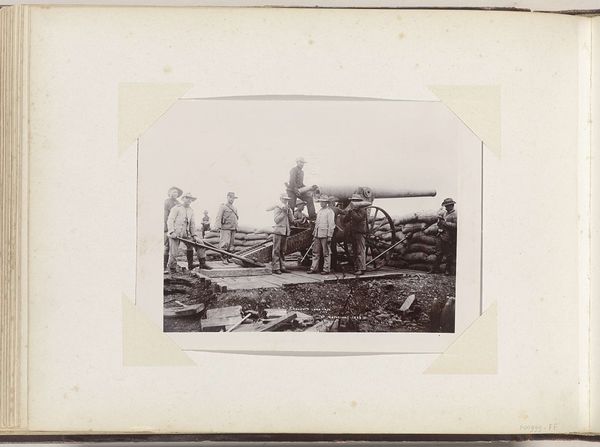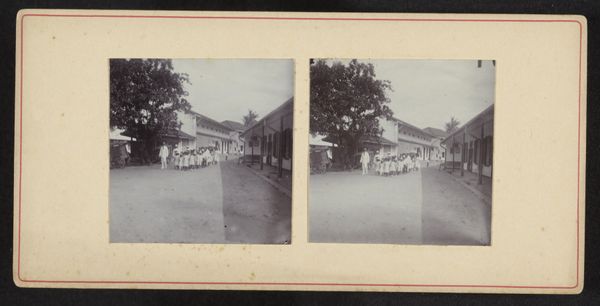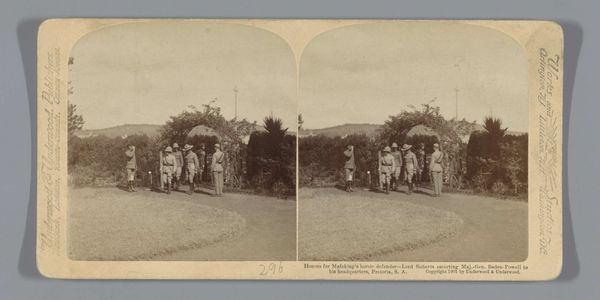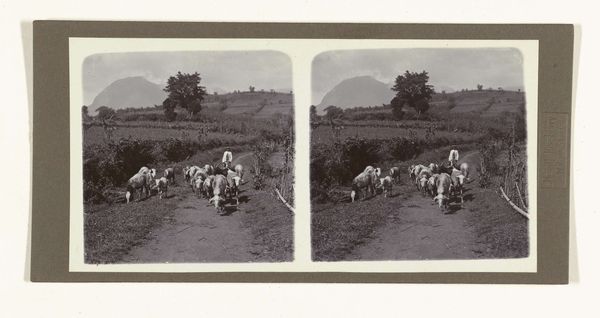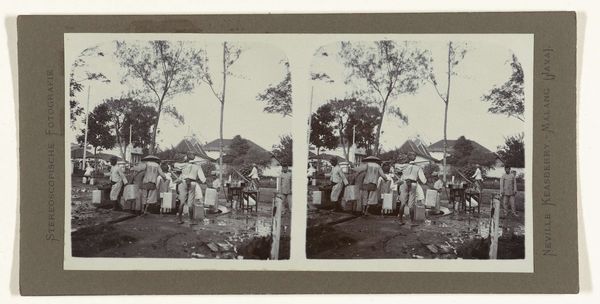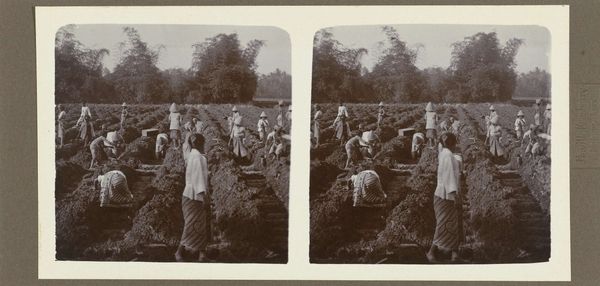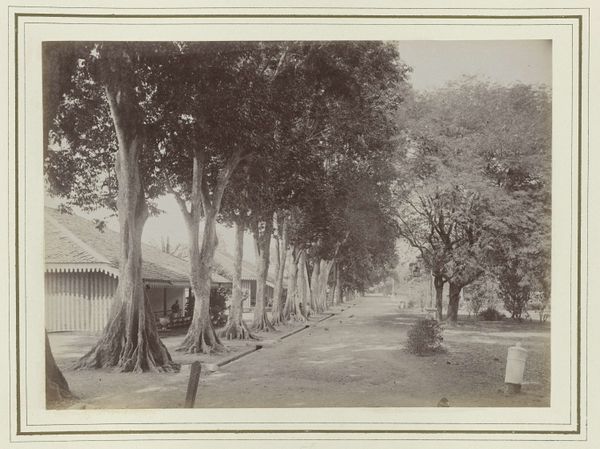
Paarden met manden voor het vervoer van koffie vanaf de plantages 1900 - 1935
0:00
0:00
photography, gelatin-silver-print
#
landscape
#
photography
#
orientalism
#
gelatin-silver-print
Dimensions: height 76 mm, width 152 mm
Copyright: Rijks Museum: Open Domain
Editor: This gelatin silver print by Neville Keasberry, dating from between 1900 and 1935, depicts "Horses with baskets for transporting coffee from the plantations." It’s fascinating how this seemingly straightforward scene hints at a larger narrative about labor and trade, don't you think? How do you interpret the symbolism present here? Curator: It’s intriguing how you immediately pick up on the underlying narratives. Consider the horse, a long-standing symbol of burden and utility. But here, what emotional baggage does it carry being laden with baskets? Editor: Perhaps the exploitation of both natural resources and local labor? The coffee represents the global market, while the horses and handlers signify the local communities enabling it. Curator: Precisely. This is a staged Orientalist scene where everything in it -the "exotic" location, "simple" dwellings, beast of burden and plantation's product - communicates cultural superiority. Do you think the artist wanted to glorify the colony or raise awareness of the conditions? Editor: I initially saw a depiction of rural life, but now recognize the underlying commentary on power dynamics and resource exploitation. Is this tension, perhaps, a conscious artistic choice? Curator: Indeed, an astute observation. Photography has historically carried the weight of "truth," so staging a photograph offers interesting implications about imposed realities and visual power. Seeing this in light of the coffee's eventual journey, the symbolism grows denser, layering economic realities over seemingly simple representations of labor. How does considering this broader view affect your perspective of the image? Editor: It's transformed my appreciation of this photograph! The layers of symbolism within this one shot – the commodification of labor, the colonial gaze – add remarkable depth. I will think twice about the weight any symbol carries. Curator: Agreed. Recognizing symbols for how they evoke cultural memory helps us to view the images not merely as artistic compositions, but cultural narratives waiting to be deciphered.
Comments
No comments
Be the first to comment and join the conversation on the ultimate creative platform.

